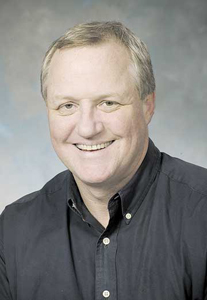Editorial
Front Page - Friday, November 26, 2010
Are we there yet?
When pictures lie
Jay Edwards

When I was about twelve, I watched a short film clip that ran before a feature movie. It was actual newsreel footage of a man shooting another man in the head. Both men, I would later learn, were Vietnamese.
American photojournalist and former marine Eddie Adams was there when it happened, and he pressed the button on his camera at just the right moment – the moment of death, with the result going on to become one of the most unforgettable war images of all time.
It is a picture of police chief Nguyen Ngoc Loan executing a Vietcong prisoner and communist guerilla, on a Saigon street, on the second day of the Tet Offensive. Adams would win the 1969 Pulitzer Prize for his photo.
Drawn by gunfire, Adams and an NBC film crew watched South Vietnamese soldiers bring their Viet Cong captive to a street corner, where they assumed he would be interrogated. Instead, South Vietnam’s police chief, Lt. Col. Nguyen, strode up, wordlessly drew a pistol and shot the man in the head. Nguyen would eventually be promoted to the rank of Brigadier General.
The photograph would shock the American public and much of the world. Critics would use it to disclaim that the war was being won, and the tide of sentiment began to change.
Forty days later President Johnson would barely defeat antiwar candidate Eugene McCarthy in the New Hampshire Democratic Primary, making it clear that there were deep divisions in the country over the war in Vietnam. Four days later, on March 16, Bobby Kennedy announced he would run for president, while on the same day in South Vietnam there would be more war damaging photographs from a small hamlet in the Quang Ngai province known as My Lai.
Fifteen days later President Johnson announced he would not seek re-election.
Those were unreal days, and I’m sure many who lived through them were changed forever. Eddie Adams life was not the same after the photograph as for him fame and guilt would merge.
In a 1972 interview he said – “Sometimes a picture can be misleading because it does not tell the whole story. The general killed the Viet Cong; I killed the general with my camera. Still photographs are the most powerful weapons in the world. People believe them; but photographs do lie, even without manipulation. They are only half-truths. What the photograph didn’t say was, ‘What would you do if you were the general at that time and place on that hot day, and you caught the so-called bad guy after he blew away one, two or three American people?’
“I don’t say what he did was right, but he was fighting a war and he was up against some pretty bad people.”
Adams obituary said that in later years he found himself so defined and haunted by the picture that he would not display it at his studio. He also felt it unfairly maligned Loan, who lived in Virginia after the war and died in 1998.
“The guy was a hero,” Adams said, recalling Loan’s explanation that the man he executed was a Viet Cong captain, responsible for murdering the family of Loan’s closest aide a few hours earlier.
Adams later apologized in person to General Nguyen and his family for the irreparable damage it did to the General’s honor while he was alive. When General Nguyen died Adams praised him as a hero of a just cause.
There would be many other photographs for Adams, who would die at the age of 71 from Lou Gehrig’s disease, however none would withstand the ages like the one he took on the Saigon street in 1968.
And yet, perhaps the thing that tells us the most about Eddie Adams the man, is the one photo he never took at all.
Adams remembers a Viet-nam battlefield – “The marines were taking about 50 percent casualties that day in very heavy fighting. I was lying in a ditch, scared to death. I was facing a marine who must have been about four feet away. He had fear on his face like I have never seen in my life. I slid my camera around to take his picture. He was about 18, and could have been the Marine poster boy – a sunburned handsome face with blue eyes and white teeth.
I tried three times but I couldn’t make myself take the picture. It would have been page one, a Life cover, one of the greatest pictures of the war – because his face told it all.
I know why I didn’t take it, I think about it a lot. It’s because my face looked exactly the same. I didn’t want anybody taking my picture. They would read it wrong and call him a coward. He wasn’t a coward. Everybody was frightened.
There are times when you don’t take pictures. This was a private moment.”
|
|